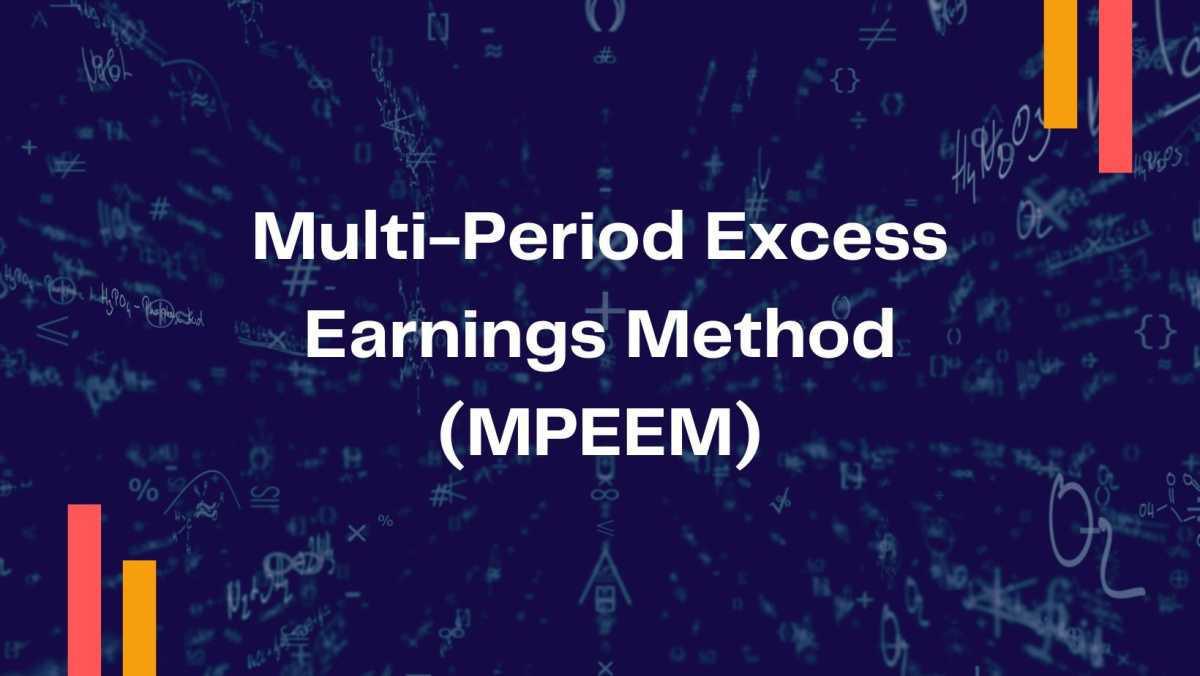The Multi-Period Excess Earnings Method (MPEEM) is a valuation approach commonly used to estimate the fair value of intangible assets, especially customer relationships and technology, under IFRS 13 and ASC 820. It is particularly useful when valuing assets that generate earnings beyond those required for contributory assets.
Steps to Apply the Multi-Period Excess Earnings Method (MPEEM)
Step 1: Identify the Asset to Be Valued
- Determine the specific intangible asset being valued (e.g., customer relationships, trademarks, patents).
- Ensure that the asset generates measurable economic benefits.
Step 2: Estimate the Total Revenue
- Forecast the future revenue expected to be generated by the business that includes the contribution of the subject intangible asset.
- Consider factors such as market growth, pricing trends, and customer retention.
Step 3: Determine the Expected Earnings Before Interest and Taxes (EBIT)
- Estimate the EBIT over the projection period.
- Use historical margins and industry benchmarks to ensure reasonable assumptions.
Step 4: Deduct Contributory Asset Charges (CACs)
- Identify and quantify charges for contributory assets (such as working capital, fixed assets, and other intangible assets).
- Contributory asset charges represent the required return on and return of these assets.
- Common contributory assets include:
- Working Capital: Cash, accounts receivable, inventory.
- Fixed Assets: Property, plant, and equipment (PP&E).
- Other Intangibles: Trade names, assembled workforce, technology.
- The CACs are typically determined based on market-based returns and amortization expenses.
Step 5: Compute the Excess Earnings
- Subtract the CACs from the forecasted EBIT to determine the residual earnings attributable to the subject intangible asset.
Step 6: Apply the Appropriate Discount Rate
- Determine the discount rate that reflects the risk associated with the subject intangible asset.
- This is often based on the Weighted Average Cost of Capital (WACC) adjusted for asset-specific risks (e.g., technology risk, obsolescence, customer attrition).
Step 7: Calculate the Present Value of Excess Earnings
- Discount the excess earnings over the projection period to their present value using the selected discount rate.
where:
- t = each forecast period
- r = discount rate
Step 8: Determine the Terminal Value (if applicable)
- If the asset has an indefinite or long useful life, estimate the terminal value based on a perpetuity growth model:
where:
-
g = long-term growth rate of excess earnings
-
r = discount rate
-
Discount the terminal value to the present using the discount rate.
Step 9: Sum the Present Value of Excess Earnings and Terminal Value
- The fair value of the intangible asset is the sum of the discounted excess earnings and terminal value:
Step 10: Perform Sensitivity Analysis
- Test the valuation under different scenarios to assess the impact of key assumptions (e.g., discount rate, revenue growth, customer attrition).
Key Considerations in MPEEM Application
- Revenue and Attrition Analysis: Customer relationships and technology-related intangibles often experience attrition, requiring a well-justified attrition rate.
- Selection of CACs: The returns on contributory assets should be market-based and supported by benchmark data.
- Discount Rate Selection: Ensure consistency with risk characteristics of the intangible asset.
- Regulatory and Market Factors: Consider industry trends, technological obsolescence, and regulatory changes.


